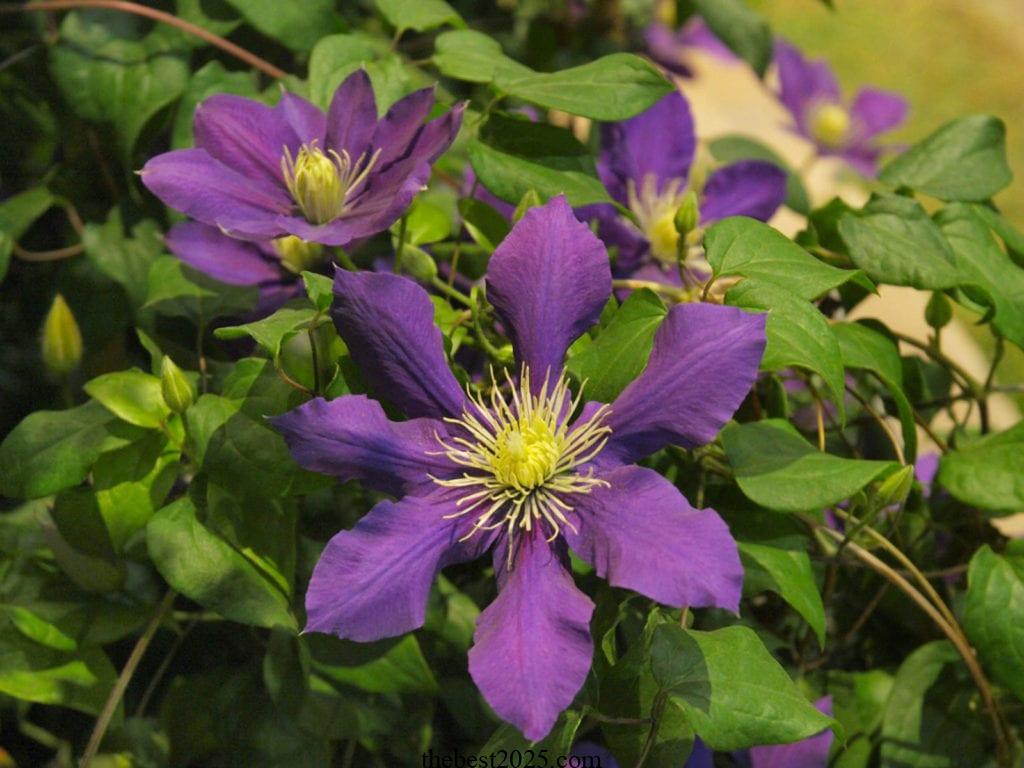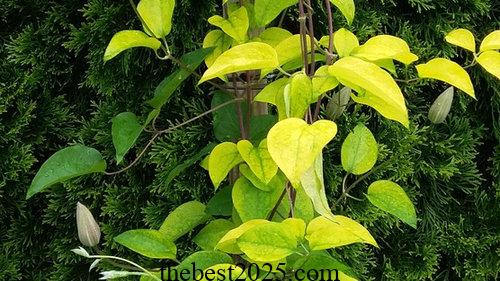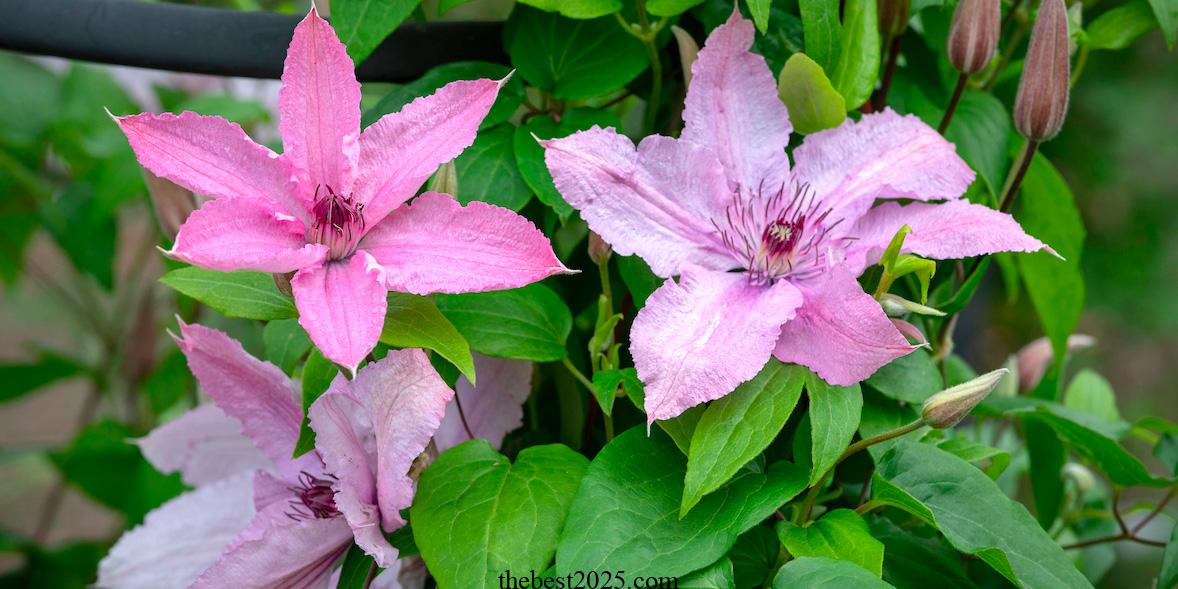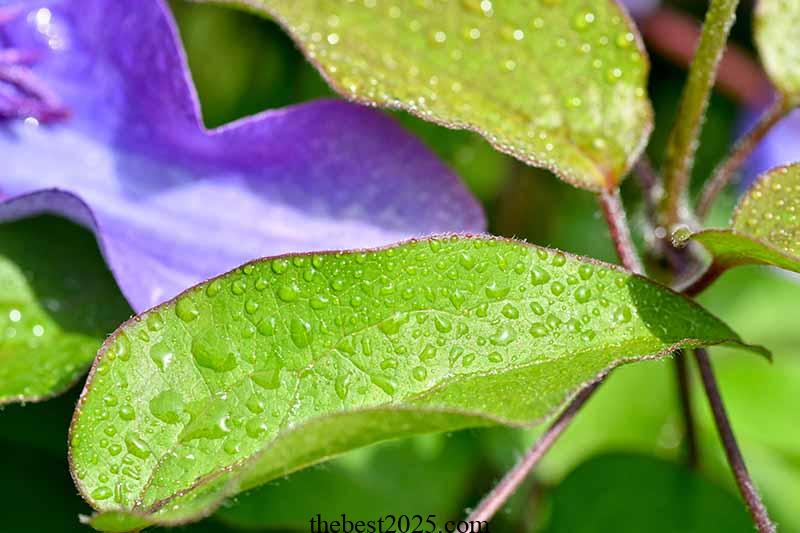9 Reasons for Yellow Clematis Leaves
Clematis, known for its vibrant and captivating flowers, is a favorite among garden enthusiasts. However, if you’ve noticed your clematis leaves turning yellow, it could be a cause for concern. In this article, we’ll delve into the 9 reasons for yellow clematis leaves, helping you understand the underlying issues and how to address them effectively.
1. Overwatering

Overwatering is a common problem that can lead to yellowing leaves in clematis. When the soil remains consistently soggy, the roots struggle to absorb oxygen, leading to poor nutrient uptake. This results in yellow, wilted leaves. To prevent overwatering, ensure that your clematis is planted in well-draining soil, and water it sparingly, allowing the topsoil to dry out between watering sessions.
2. Underwatering

On the flip side, underwatering can also cause clematis leaves to turn yellow. When the plant doesn’t receive an adequate amount of water, it becomes stressed, affecting its overall health. Be sure to water your clematis regularly, especially during hot and dry periods, to maintain the ideal moisture level.
3. Soil pH Imbalance

Clematis prefers slightly acidic to neutral soil with a pH range of 6.0 to 7.0. If your soil is too alkaline or acidic, it can hinder the plant’s ability to absorb essential nutrients, resulting in yellow leaves. Consider testing your soil’s pH and amending it accordingly to create a more hospitable environment for your clematis.
4. Nutrient Deficiency

Yellowing leaves can also be a sign of nutrient deficiency. Clematis requires a balanced diet of essential nutrients, including nitrogen, phosphorus, and potassium. A lack of these nutrients can lead to leaf discoloration. Fertilize your clematis with a balanced, slow-release fertilizer to provide the necessary nutrients for healthy growth.
5. Pests and Diseases

Pests and diseases can wreak havoc on clematis plants, causing their leaves to turn yellow. Keep an eye out for common culprits like aphids, spider mites, and fungal infections. Regularly inspect your clematis, and if you detect any issues, address them promptly with the appropriate pesticides or treatments.
6. Improper Pruning
Improper pruning can stress your clematis and lead to yellowing leaves. Different clematis varieties have specific pruning requirements, and if you cut them back at the wrong time or too aggressively, it can hinder their growth. Research the pruning guidelines for your specific clematis variety and follow them carefully.
7. Environmental Stress
Clematis is sensitive to environmental changes. Factors such as extreme temperatures, strong winds, and excessive sunlight can stress the plant, causing its leaves to yellow. To protect your clematis from environmental stress, provide it with a suitable location and some shade during the hottest parts of the day.
8. Root Compaction
Root compaction can occur over time, especially if you have a mature clematis. When the roots become compacted, they struggle to access essential nutrients and oxygen, leading to yellow leaves. Consider gently loosening the soil around the root zone to improve aeration and nutrient absorption.
9. Disease Resistance
Some clematis varieties are more resistant to diseases and stress than others. If you continually face issues with yellowing leaves, you might want to consider planting a different clematis variety that is better suited to your local conditions and is less prone to common problems.
By addressing these nine possible reasons for yellow clematis leaves, you can better understand and care for your beloved clematis plants. Remember that a healthy clematis will reward you with its stunning blooms, so take the necessary steps to ensure its well-being.
FAQ for “9 Reasons for Yellow Clematis Leaves”
Q1. How can I improve the soil pH for my clematis?
To adjust the soil pH for your clematis, you can add materials such as lime to raise pH or sulfur to lower it. Be sure to test your soil’s pH first and follow the recommended application rates for the chosen amendment.
Q2. When should I prune my clematis to avoid yellowing leaves?
The pruning time for clematis depends on its type or group. For Group 1 clematis, which includes early-flowering varieties, prune after flowering. Group 2 clematis, which includes large-flowered types, can be lightly pruned in late winter or early spring. Group 3 clematis, the late-flowering varieties, are typically pruned in late winter or early spring, cutting them back to the lowest pair of strong buds.
Q3. What are the signs of common clematis pests and diseases?
Watch out for aphids, which cluster on the undersides of leaves, spider mites that cause webbing and stippled leaves, and fungal diseases that may result in discolored spots or wilting. Regularly inspect your clematis and address any issues promptly.
tag
- chicken feed
- how to Keep Chickens Off Your Porch
- How to grow oyster mushrooms at home
- Growing Kale in Pots


0 Comments